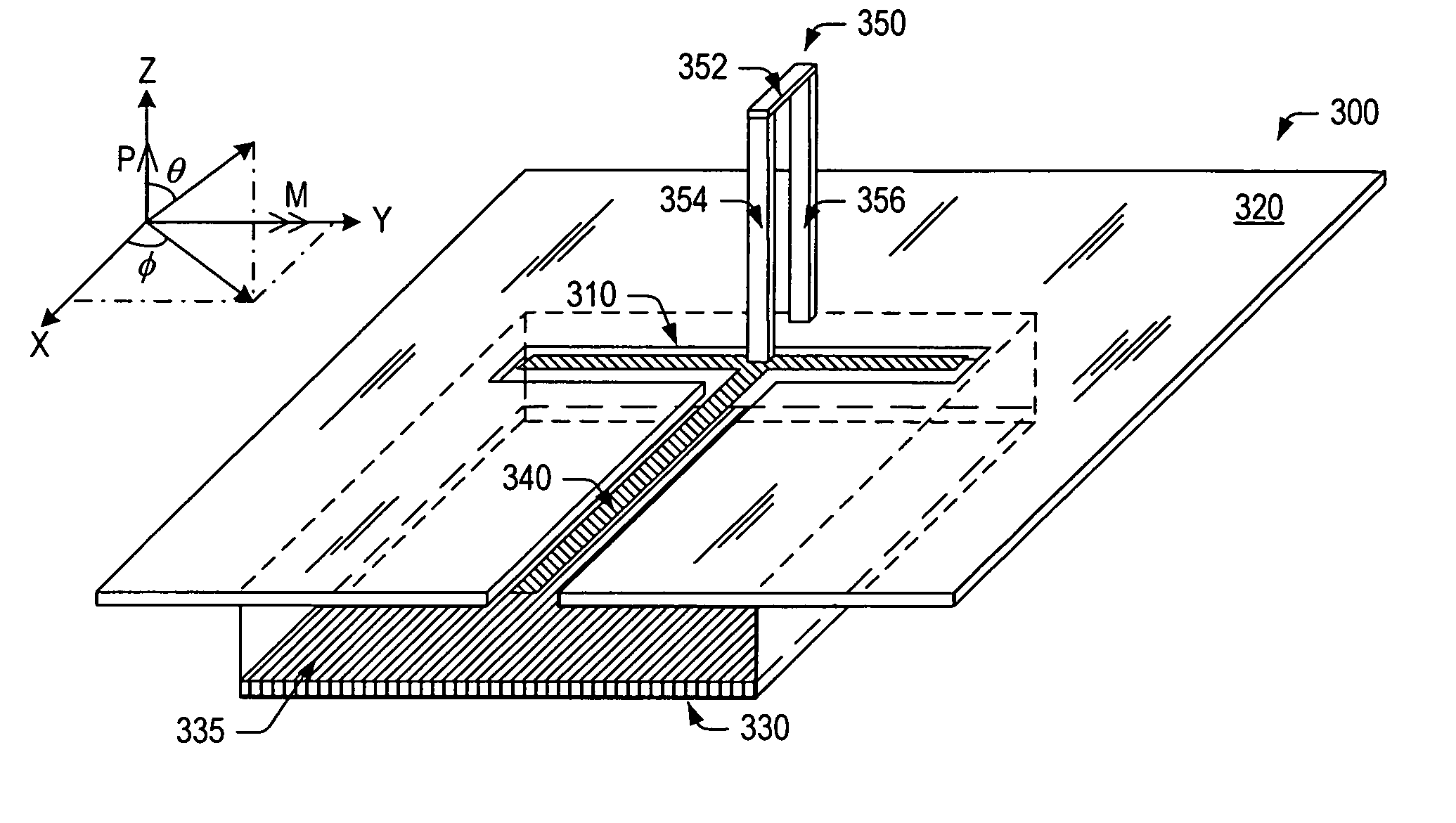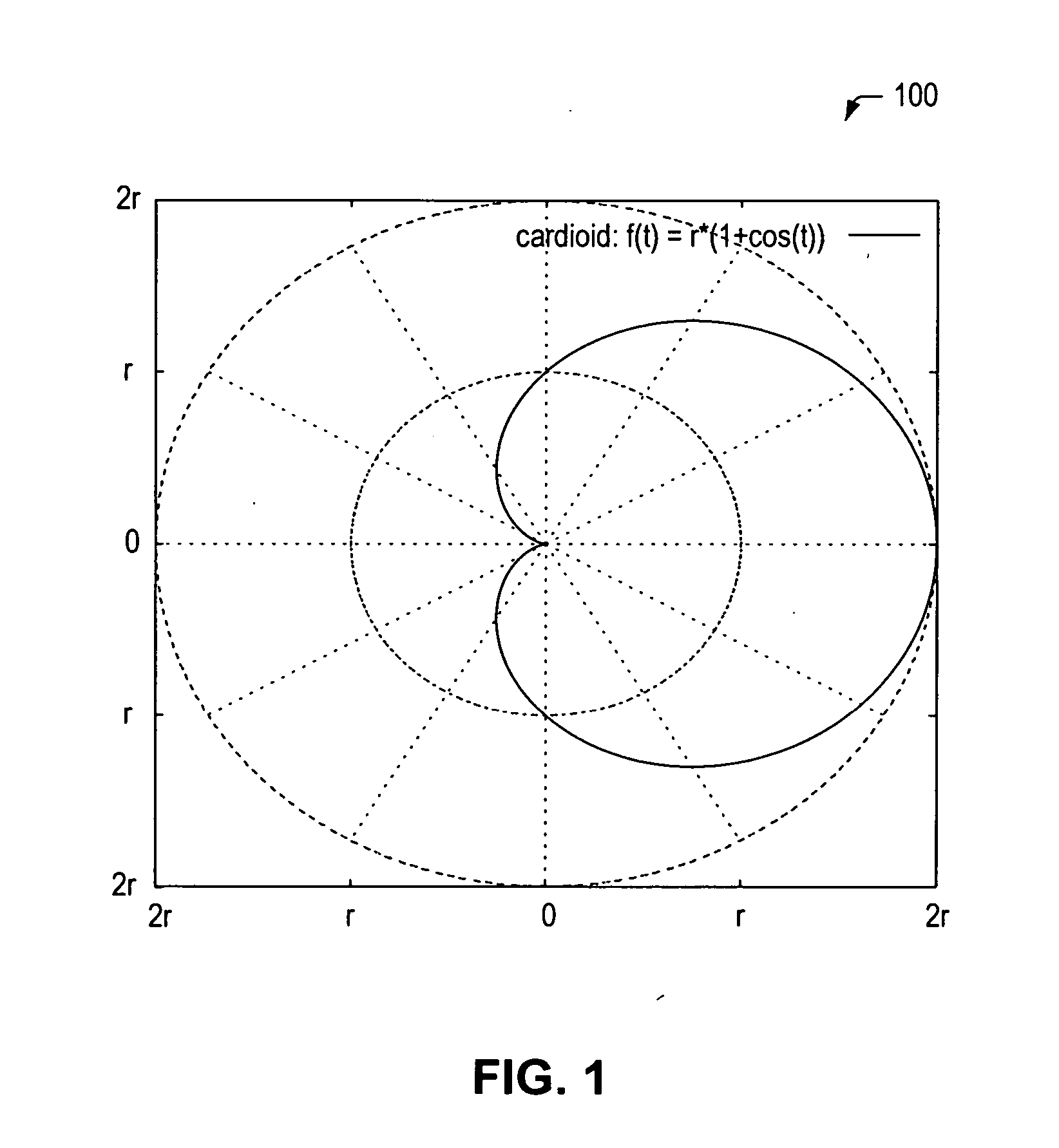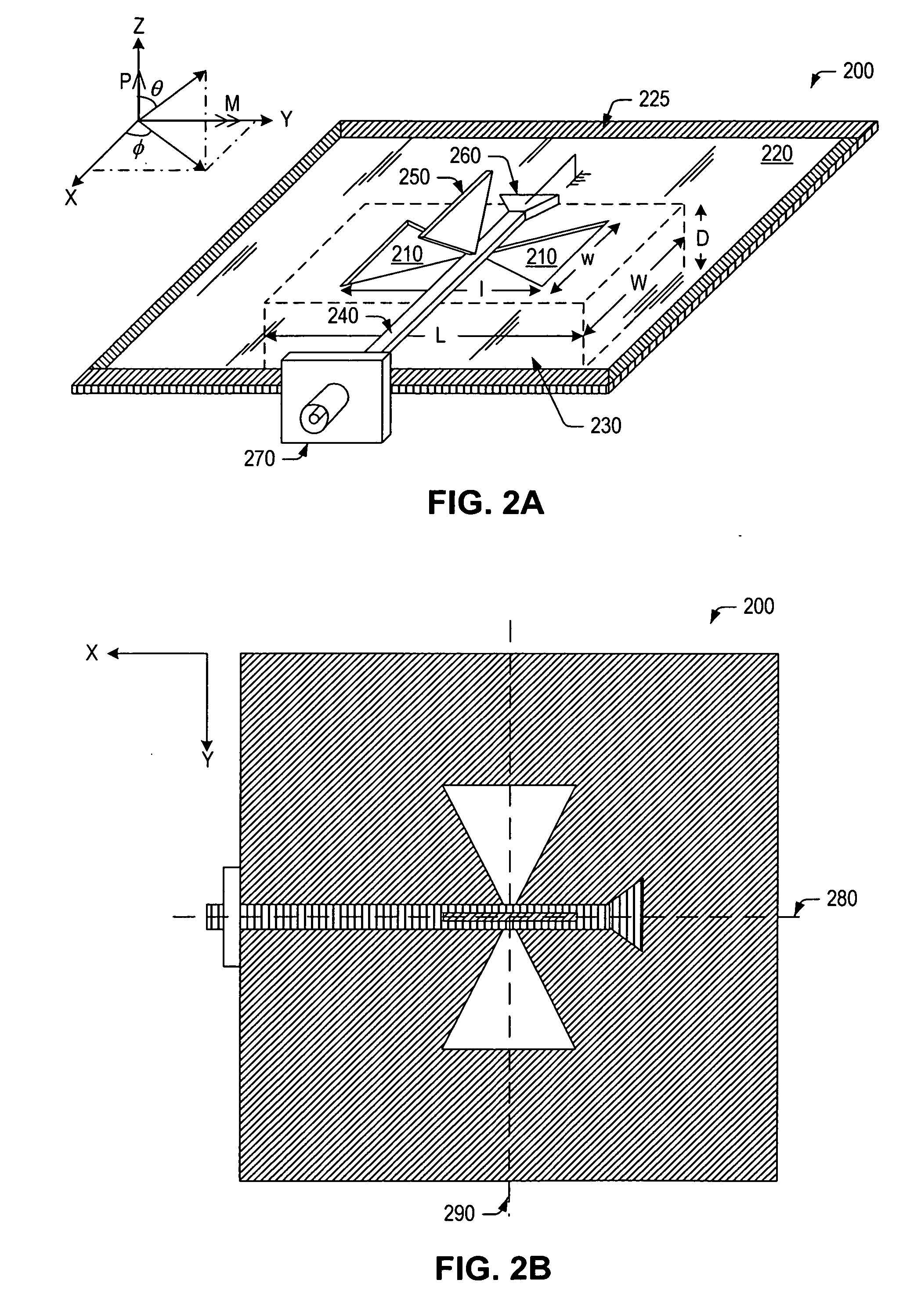PxM antenna with improved radiation characteristics over a broad frequency range
a radiation characteristic and broad frequency range technology, applied in the field of antennas, can solve the problems of high inefficiency of prior art designs, and achieve the effects of improving radiation efficiency, reducing loss, and increasing efficiency and operating frequency bandwidth
- Summary
- Abstract
- Description
- Claims
- Application Information
AI Technical Summary
Benefits of technology
Problems solved by technology
Method used
Image
Examples
Embodiment Construction
[0029] P×M antennas, so called because they are derived from an orthogonal combination of electric and magnetic radiators, possess several desirable characteristics including, but not limited to, a useful radiation pattern and relatively broad impedance bandwidth for a given electrical size. One form of the P×M antenna exhibits the radiation pattern of a hypothetical Huygens source. The radiation pattern, also referred to as the Ludwig-3 pattern, is a linearly-polarized unidirectional pattern comprised of a cardioid of revolution about the axis of maximum radiation intensity, and falls into the class of so-called maximum directivity patterns. As used herein, a “cardioid” is described as the curve traced by a point on the circumference of a circle rolling completely around another circle of fixed radius (r), and has the general equation of:
ρ=r*(1+cos θ) (EQ.3)
in polar coordinates. A polar plot of a cardioid-shaped radiation pattern 100 is shown in FIG. 1. In the foregoing discus...
PUM
 Login to View More
Login to View More Abstract
Description
Claims
Application Information
 Login to View More
Login to View More - R&D
- Intellectual Property
- Life Sciences
- Materials
- Tech Scout
- Unparalleled Data Quality
- Higher Quality Content
- 60% Fewer Hallucinations
Browse by: Latest US Patents, China's latest patents, Technical Efficacy Thesaurus, Application Domain, Technology Topic, Popular Technical Reports.
© 2025 PatSnap. All rights reserved.Legal|Privacy policy|Modern Slavery Act Transparency Statement|Sitemap|About US| Contact US: help@patsnap.com



